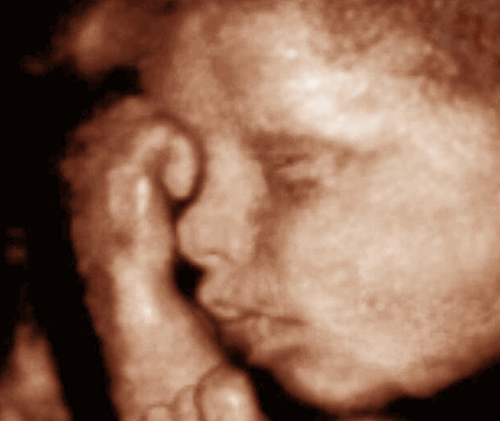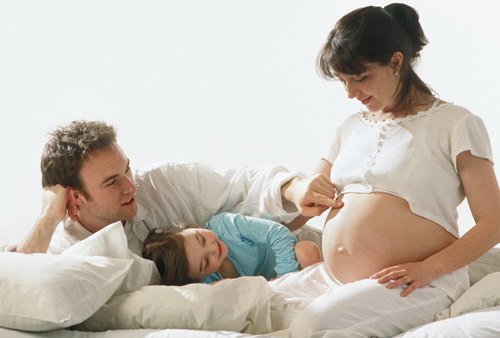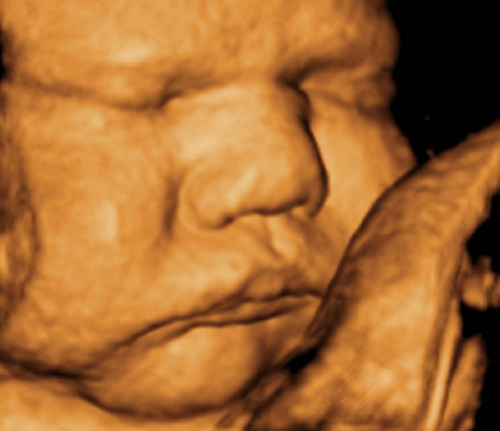You are 37 Weeks and 5 Days 16 days to go…
When there’s going to be a new arrival on the scene, it’s important to prepare the little members of your household.
Your baby today
The size of your uterus may have reduced slightly as your baby’s
head becomes more deeply engaged within your pelvis, allowing her body
to move down. This can take some of the pressure away from your ribs,
which is a welcome relief at this stage.

How you handle introducing the new baby
to your children will depend on their age. A toddler might be totally
indifferent and unfazed, being more interested in your new baby’s toys
than the fact that she has a new brother or sister. An older child might
be shocked and jealous by the arrival of a new baby, who appears to
steal her limelight, and usurp his mommy and daddy’s attention.
It’s a good idea to
prepare your little one several weeks in advance, explaining that the
new baby will need a lot of time and attention, will need to be fed and
changed regularly, and probably not be much fun for a few months. Focus
on how your child can be a great helper, and show her what the new baby
will need when she is born. Take some books out of the library that
explain how families change when a new baby is born, and ask your child
to talk about how she’s feeling, and how she thinks things will be
different when the baby arrives.
Encourage your
child to choose a gift to give to the baby, and find something your
child really wants as a gift from her new sibling. Ask grandparents or
close friends to arrange a few treats or outings for your child both now
and after the birth, so that she’s occupied, and getting extra
attention.
Try to encourage a bond between your older child and your baby.
Ask your child to imagine what the baby might be getting up to inside
Mommy. Encourage her to suggest names, although don’t promise to use
them!

… Doctor
| Q: |
My mom had a difficult delivery with me. Am I likely to have the same experience as her?
|
| A: |
Like many women, you’re obviously aware of the details of your own birth.
Some say you’ll have
the same sort of delivery your mom had with you—for example, your baby
will be early or late or you’ll have a very quick labor or a slow,
assisted one. This isn’t necessarily true.
Remember,
depending on how old your mom is, there have probably been significant
developments in obstetrics since your mom’s days and, even if you face
the same hurdles during your labor, they might be managed differently.
Also, you might
be healthier and stronger than your mom was, so don’t assume you’re in
for a difficult labor just because she had one.
|
You are 37 Weeks and 6 Days 15 days to go…
Newborn babies can tightly hold someone’s finger because of the grasp reflex, and this is already functioning in the uterus.
Your baby today
Estimating your baby’s size by measuring from the top of the
uterus to the front of your pelvic bone can give you an idea of size,
but this is less accurate now. Your baby may not yet have moved down
into the pelvis and the amount of fluid around your baby is variable.

Inside the uterus your baby has developed a strong grasp reflex.
The grip is so strong after birth that it could support your baby’s
weight. This grasp reflex persists until your baby is about six months
old; she will then have more choice over whether to grasp an object or
not.
Interestingly, your baby
also has a similar reflex in the foot. This is the “plantar reflex” and
it causes the toes to attempt to curl around your finger if the sole of
the foot is stroked. The plantar reflex takes slightly longer to
disappear after birth, typically persisting until 12 months of age.
Another reflex action causes the toes to spread out if the side of the
foot is stroked. These reflexes and others seem to be quite primitive in
nature and although they are thought to protect the baby, the precise
function of each reflex is not fully understood.
Second labors are usually shorter in duration than first labors.
This usually means
an easier labor, but a second baby could be bigger than a first, or
positioned differently. There are many factors to consider.
… Doctor
| Q: |
Is it true that natural or water births are best for the baby?
|
| A: |
Most childbirth experts would agree that a straightforward
vaginal birth is the safest form of birth for both mother and baby. It
is also generally considered safe to use water as a method of relieving
the pain in uncomplicated labors.
However, it is
sometimes not possible to achieve a straightforward vaginal delivery due
to certain situations that can arise during, labor and birth. If a
problem with either the mother or baby occurs, the medical team will
advise you on the safest way of delivering the baby.
It’s important to
think about the type of birth you would prefer and are comfortable with,
but be prepared to be flexible and to see how labor unfolds. Speak to
your doctor to find out if there’s a birthing pool you can use at your
hospital.
|
In addition to being an effective way to relax,
using a birthing pool can speed up labor. It is thought that water sets
off a surge of the hormone oxytocin, which triggers contractions.

Owls!
Could owls give us an insight into pregnancy and birth? It’s doubtful, but these myths are entertaining!
If a pregnant woman hears the shriek of an owl, her child will definitely be a girl.
An owl living in the attic of a house will cause a problem with the baby.
When the time comes to give birth there should be no owls in the delivery room—if they hoot at the moment of birth the child will have a miserable life.